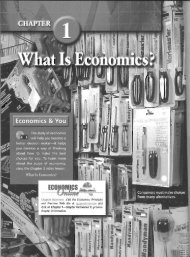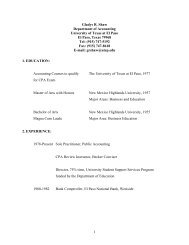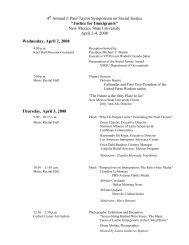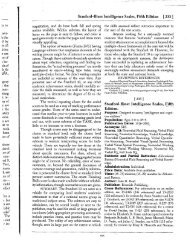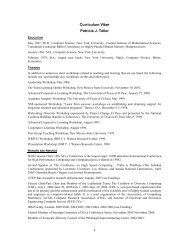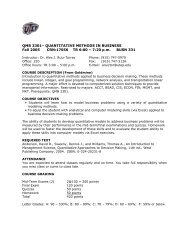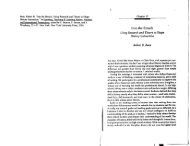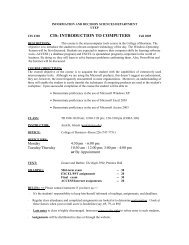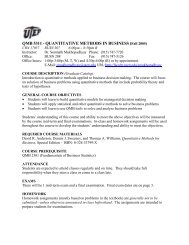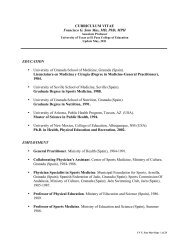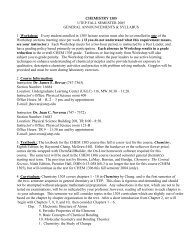Exam - Faculty.utep.edu
Exam - Faculty.utep.edu
Exam - Faculty.utep.edu
You also want an ePaper? Increase the reach of your titles
YUMPU automatically turns print PDFs into web optimized ePapers that Google loves.
140) What is oxidized and what is r<strong>edu</strong>ced in the following reaction<br />
2Al + 3Br2 ˙ 2AlBr3<br />
A) Al is oxidized and Br2 is r<strong>edu</strong>ced.<br />
B) AlBr3 is r<strong>edu</strong>ced and Br2 is oxidized.<br />
C) Al is r<strong>edu</strong>ced and Br2 is oxidized.<br />
D) AlBr3 is r<strong>edu</strong>ced and Al is oxidized.<br />
E) AlBr3 is oxidized and Al is r<strong>edu</strong>ced.<br />
141) Which of the following describes an oxidation<br />
A) loss of electrons or loss of oxygen<br />
B) loss of electrons or gain of oxygen<br />
C) loss of electrons or gain of hydrogen<br />
D) gain of electrons or gain of oxygen<br />
E) gain of electrons or loss of H<br />
142) A catalyst is<br />
A) a reactant in a chemical reaction.<br />
B) a product in a chemical reaction.<br />
C) a substance that speeds up a reaction without being consumed in the reaction.<br />
D) a substance that increases the energy of the products.<br />
E) a substance that decreases the energy of the products.<br />
143) When a reaction is at equilibrium,<br />
A) all reaction stops.<br />
B) no more reactants are converted to products.<br />
C) the reaction is no longer reversible.<br />
D) the forward and reverse reactions occur at the same rate.<br />
E) the products and reactants have the same energy content.<br />
144) For the following equilibrium reaction, which cause and effect are correctly matched<br />
CO(g) + 2H2(g) ˙ CH3OH(g) + heat<br />
A) add heat, shift right<br />
B) add CO, shift left<br />
C) remove CH3OH, shift left<br />
D) remove heat, no change<br />
E) remove H2, shift left<br />
19



